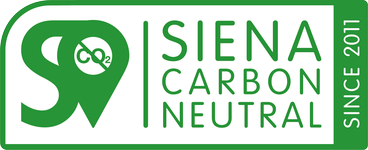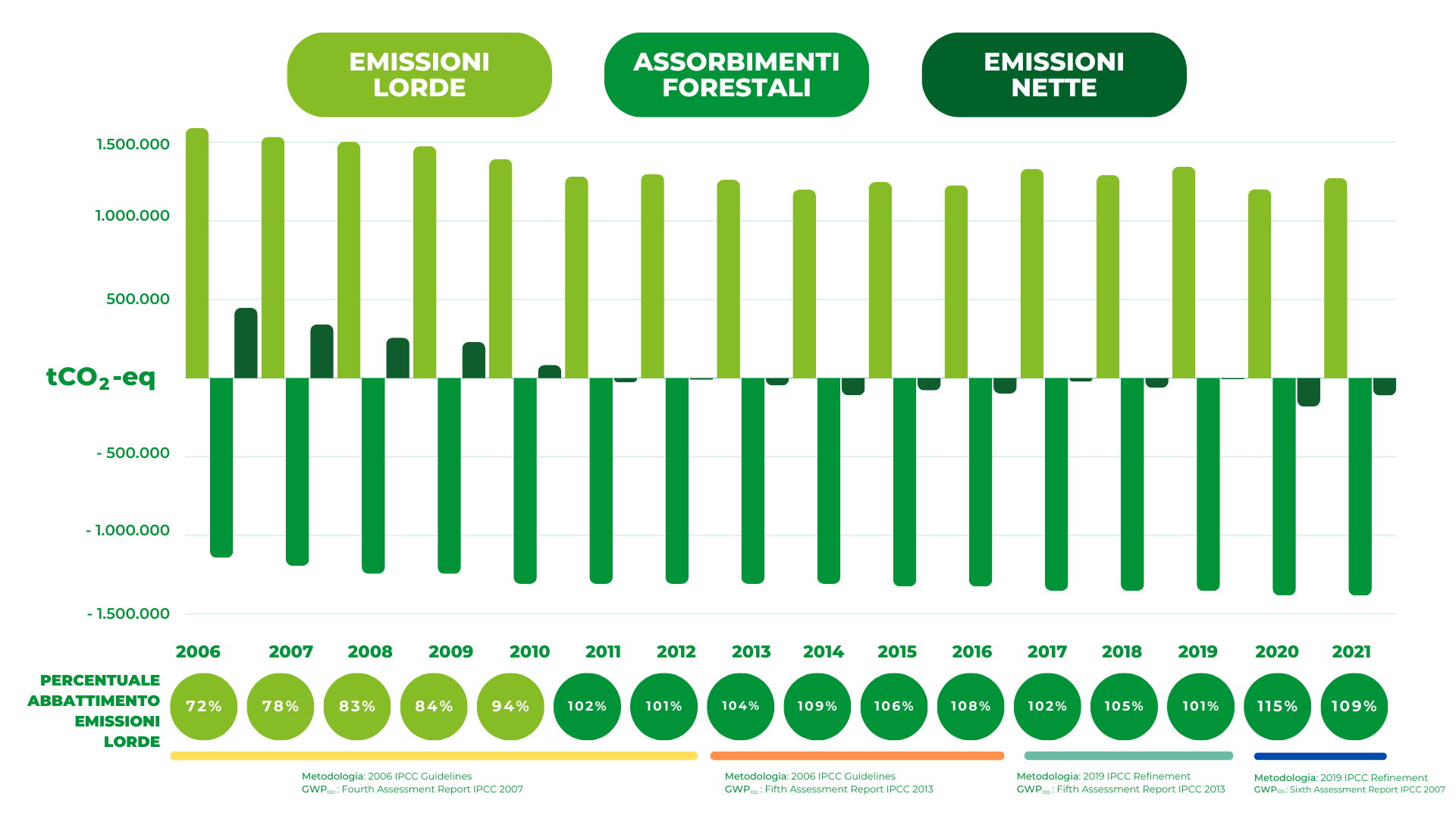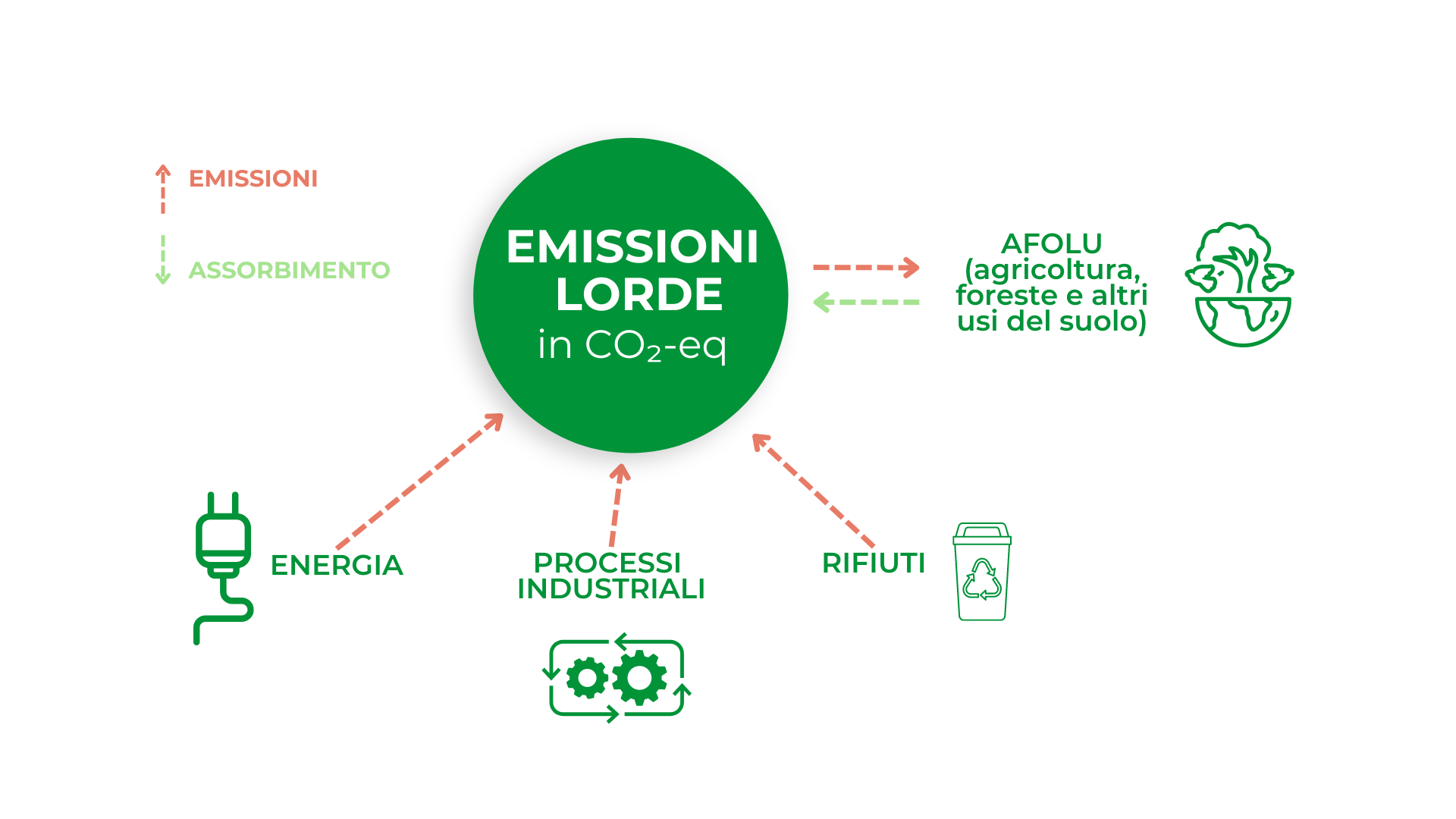
The balance
In the Province of Siena, greenhouse gas emissions are completely offset by the CO2 absorption of the local forest ecosystems, thus defining the state of carbon neutrality. This objective is confirmed by the annual greenhouse gas inventory carried out by the Ecodynamics Group (University of Siena) in accordance with the guidelines of the Intergovernmental Panel on Climate Change (IPCC). In order to carry out the inventory, the following sectors were analysed Energy, Industry, Waste, Agriculture Forests and Other Land Uses (AFOLU).
The inventory was carried out according to a geographical criterion, except for electricity consumption when imported. The bottom-up approach was used, i.e. the data were collected directly in the Siena area and were not derived from regional or national averages.
In 2006, when the first greenhouse gas inventory was certified, the percentage of gross emission reduction was 72%.
In 2011, the Province of Siena reached carbon neutrality with a reduction percentage of 102% and a decreasing trend in the following years.
In 2021, the reference year of the last monitoring, the absorption of CO2 from the atmosphere exceeded the emission of greenhouse gases by 9%.
In 2021, the Province of Siena issued 1,227,220 tons of CO2-eq.
The emissions in 2021 are due to:
- 77% use of fossil fuels
- 16% livestock farming (enteric fermentation and manure management), agriculture (nitrogen application to soil, use of urea and land use change), forestry practices (deforestation and fires)
- 7% Waste and water
- 0.1% Industry
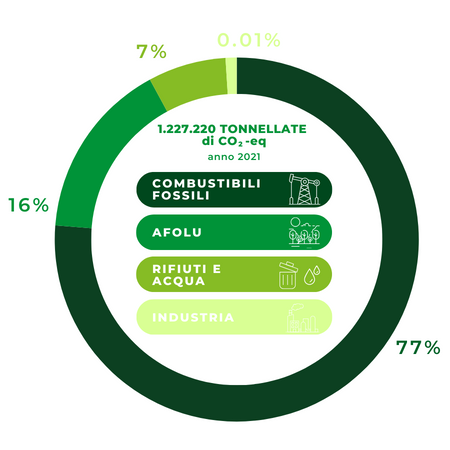
In 2021, the provincial forest absorption, exceeding -1,383,017 tons of CO2, removed all greenhouse gas emissions released by local human activities (109%).
In 2019, the percentage of greenhouse gas emissions was 101% and the room for manoeuvre was very limited. The pandemic of COVID-19 increased the percentage of reduction and achieved excellent results in terms of compensation.
In 2020, a traumatic event such as the pandemic led to a reduction in greenhouse gas emissions (-11% compared to 2019), particularly in the most affected sectors.
In 2021, there was a resumption of the main activities, which were reconsolidated after the containment of the COVID-19 pandemic, even if some economic sectors (such as tourism) did not manage to return to pre-pandemic levels.
Given this dynamic, gross emissions in 2021, particularly in the energy sector, are midway between those of 2019 and 2020.
The map of greenhouse gas emissions and absorption
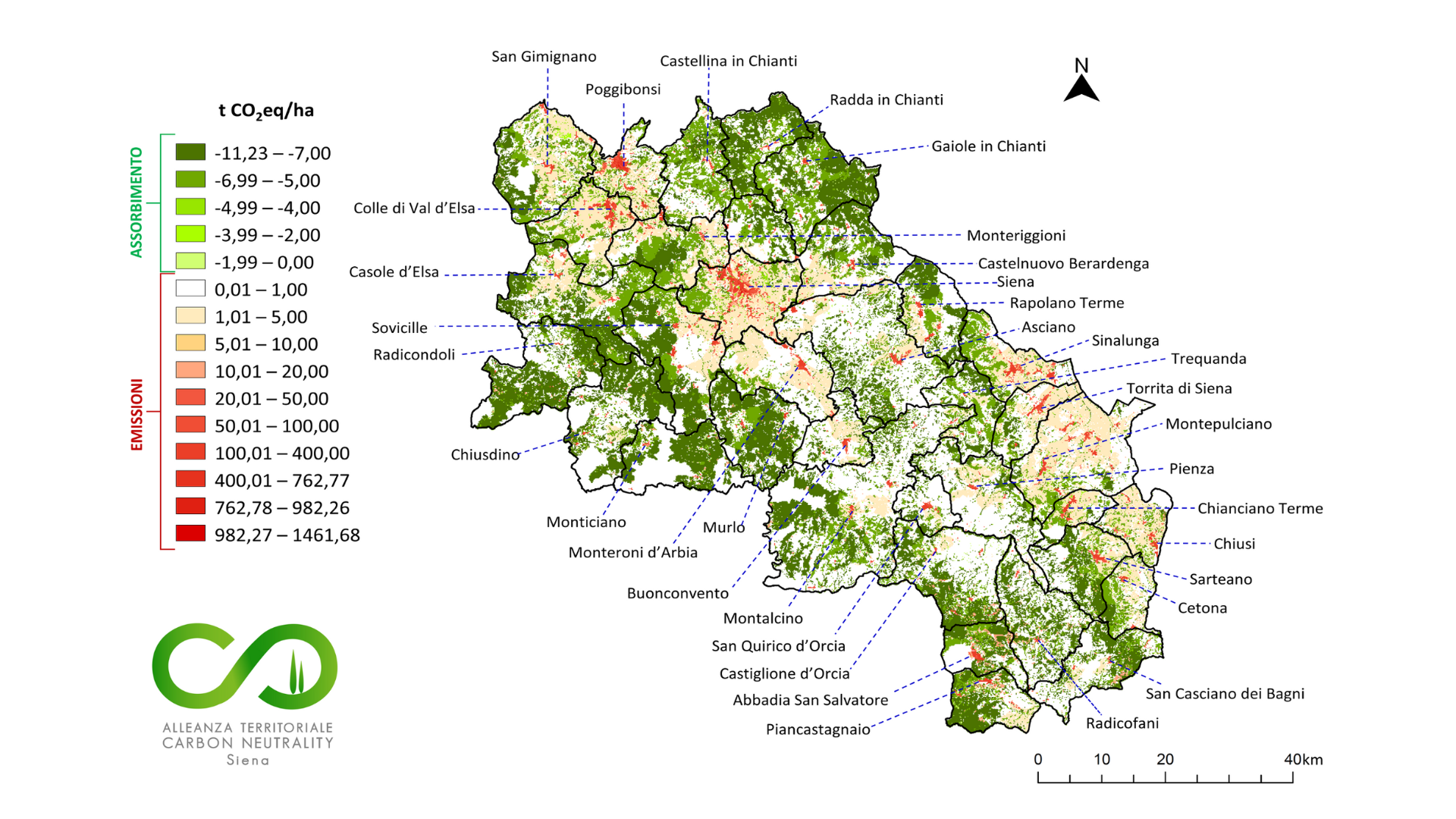
The map shows the spatial distribution of emissions and removals in the territory of the Province of Siena in 2020.
The green scale indicates the areas where forest removals are taking place: in these areas, CO2 removals are higher than greenhouse gas emissions.
The red scale, on the other hand, shows the areas of the Province of Siena where climate-changing emissions are recorded.
The highest emissions (dark red) are associated with densely populated centres, while the lowest emissions (light pink) are due to agricultural and forestry practices.
Areas in white emit greenhouse gases balanced by local removals.
More than 50% of the area is characterised by zero greenhouse gas emissions from removals (in green and white), a condition of carbon neutrality.
Certification
The Province of Siena is the first case in Europe of application of the ISO 14064-1 certification standard to a large administrative/regional system. The methods, data and results of the greenhouse gas inventories were verified and validated by the certification agency RINA Services S.p.A. The application of standard methods make it possible to reduce uncertainty to a minimum and to produce accurate, coherent, reproducible results. As required by ISO 14064-1 certification, the sensitivity of the greenhouse gas inventories was determined: the overall uncertainty of the balance was about 10%.
